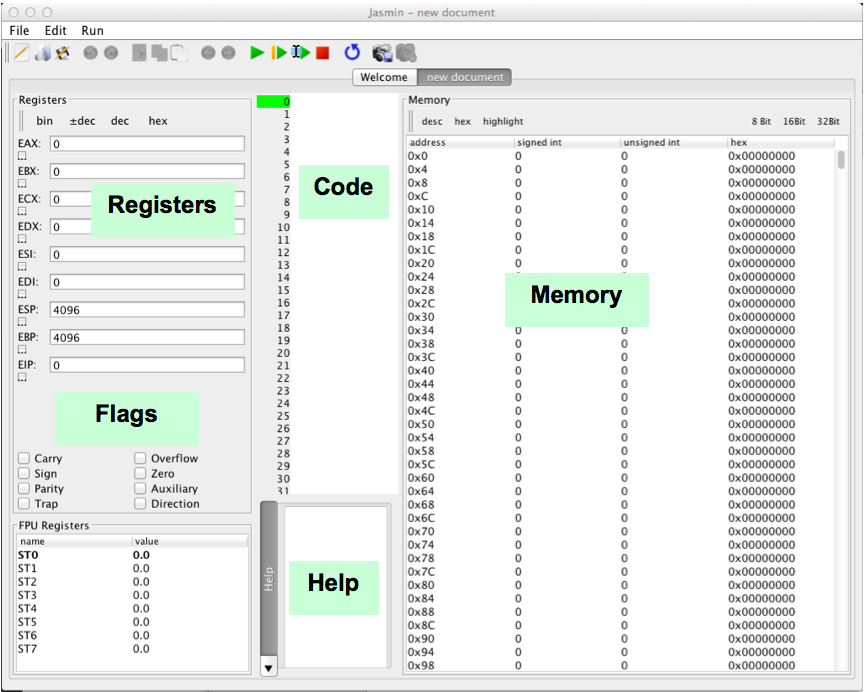
Click the "Do I have Java?" link. Follow the instructions on your screen to download and run a Java applet. If you don't have Java, download and install it.
Note: If you are using the Mac, you should use Safari, not Chrome.
Click the "New File" button. Look over the window, referring to the diagram below:

Find and examine these sections:
The ESP (Extended Stack Pointer) contains the address of the top of the Stack.
The EIP (Extended Instruction Pointer) contains the address of the the next instruction to be processed.
With the Memory pane scrolled to the top, as shown in the image above, you see memory that the program will use to store data during processing.
Scroll this pane to the bottom to see the Stack, which starts at address 0x1000 and grows downward.
mov eax, 4
mov ebx, 6
At the top of the Jasmin window, click the green Run button, as shown below.

The program runs. When it stops, notice these things, as shown below:
Troubleshooting
If you make an error in an instruction, the program will stop prematurely. Fix the instruction, and click the Reset button. Then you can run it again.
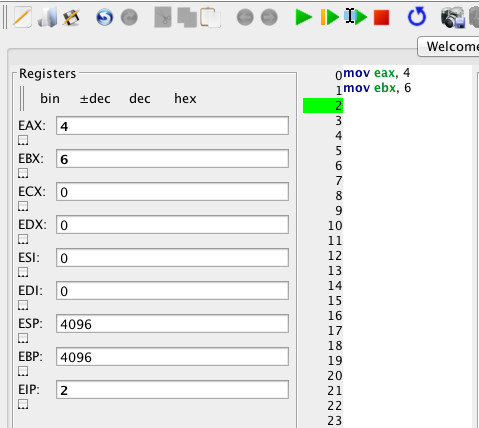
mov eax, 4
mov ebx, 6
mov [eax], ebx
mov ecx, eax
add ecx, ebx
mov [eax+4], ecx
Run the program. When it completes, you should see these results, as shown below:
mov eax, 4Move the value 4 into eax mov ebx, 6Move the value 6 into ebx mov [eax], ebxMove the value in ebx (which is 6) into the memory location pointed to by eax (memory location 4) mov ecx, eaxMove the value in eax (which is 4) into ecx add ecx, ebxAdd the value in ebx (which is 6) to the value in ecx (which is 4), and put the result into ecx (the result is 10) mov [eax+4], ecxMove the value in ecx (which is 10) into the memory location four past the location pointed to by eax (memory location 8)
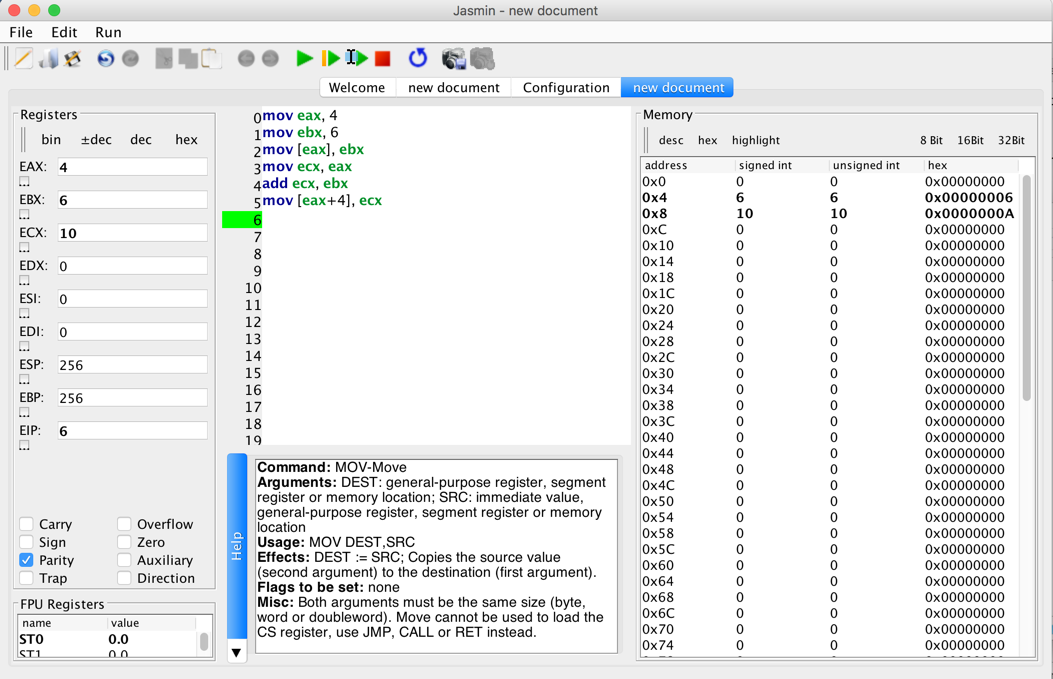
In the Code section, type in these instructions.
mov eax, 4
mov ebx, 6
push eax
push ebx
256 is 0x100 in hexadecimal--this is where the Stack ends.
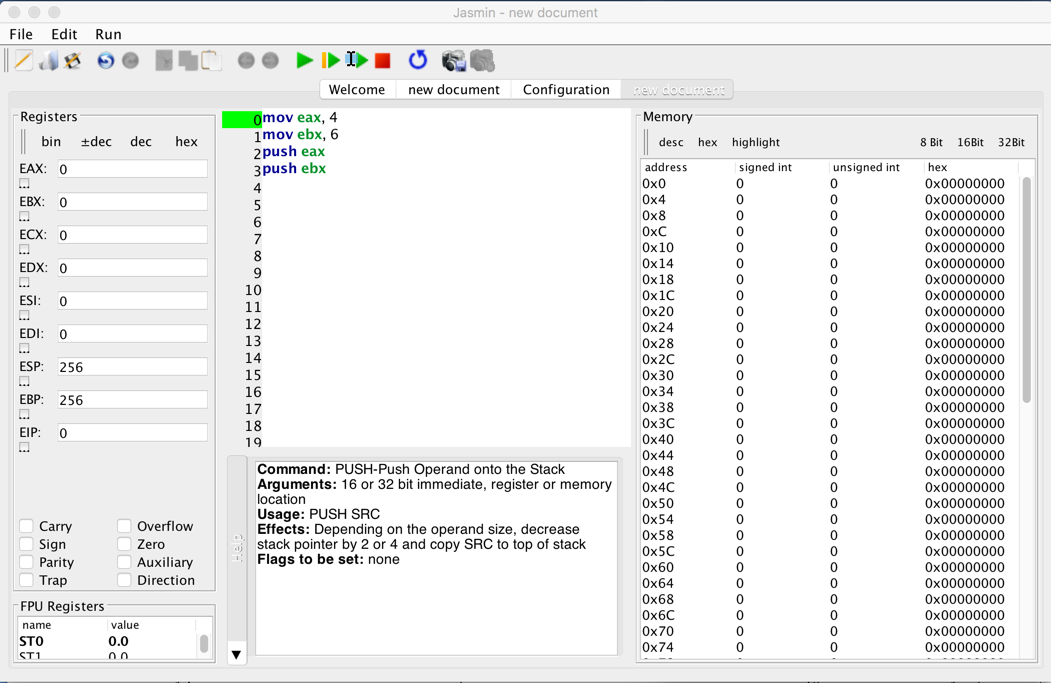
Scroll down in the Memory pane to see the last values. As show below, the last location is at 0xFC. This value is 32 bits long, so it contains four bytes, at locations 0xFC, 0xFD, 0xFE, and 0xFF. The ESP points to the next byte, 0x100.
These instructions move the number 4 into eax, and the number 6 into ebx. Then both values are pushed onto the stack.
Notice these things, as shown below:
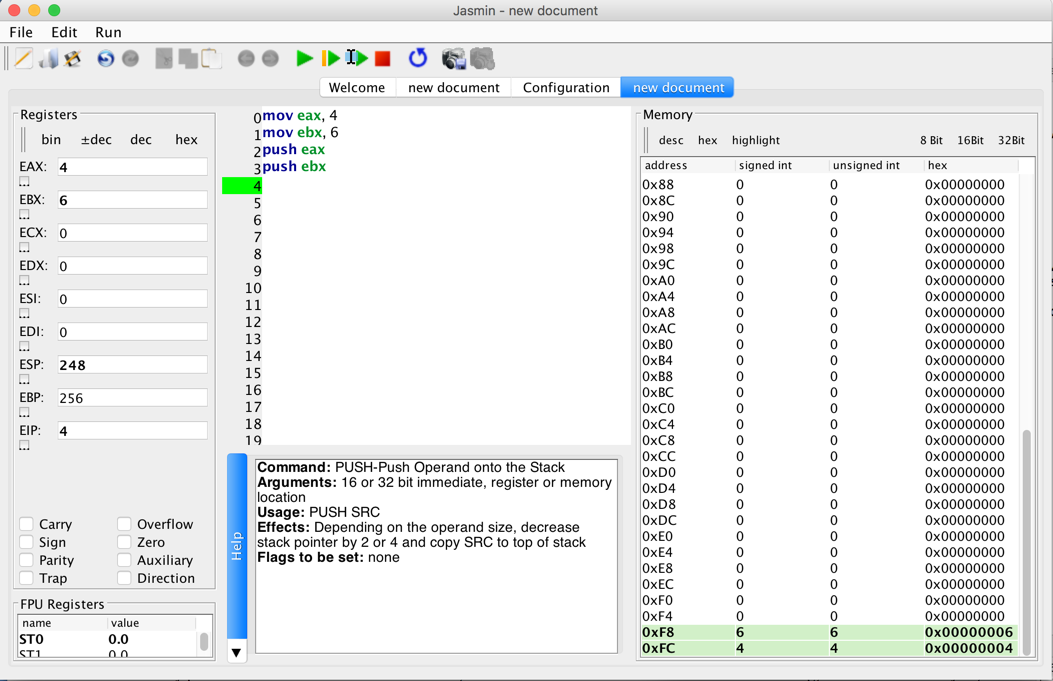
mov eax, 4
mov ebx, 6
push eax
push ebx
pop ecx
Notice these things, as shown below:
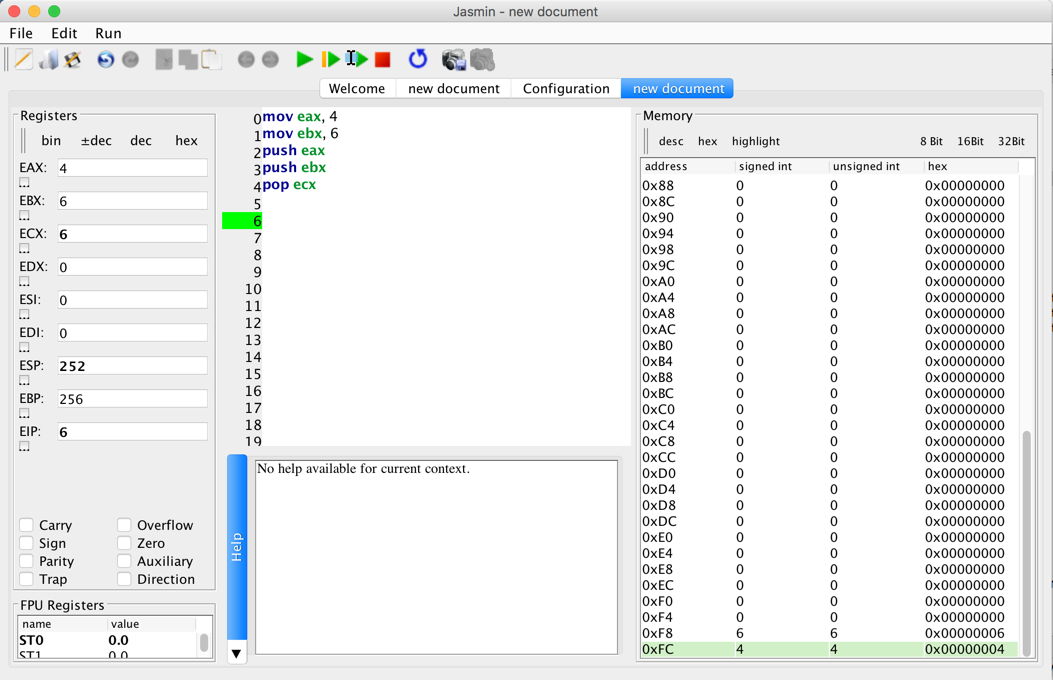
In the Code section, type in these instructions.
mov eax, 1
mov ebx, 2
mov ecx, 3
mov edx, 4
push eax
push ebx
push ecx
push edx
pop eax
pop ebx
pop ecx
pop edx
However, since the stack is a FILO (First In, Last Out) structure, this reverses the order of the values.
Push the Step four times to execute only the first four instructions, as shown below:

You see the values 1, 2, 3, and 4 loaded into the EAX, EBX, ECX, and EDX registers, as shown below.
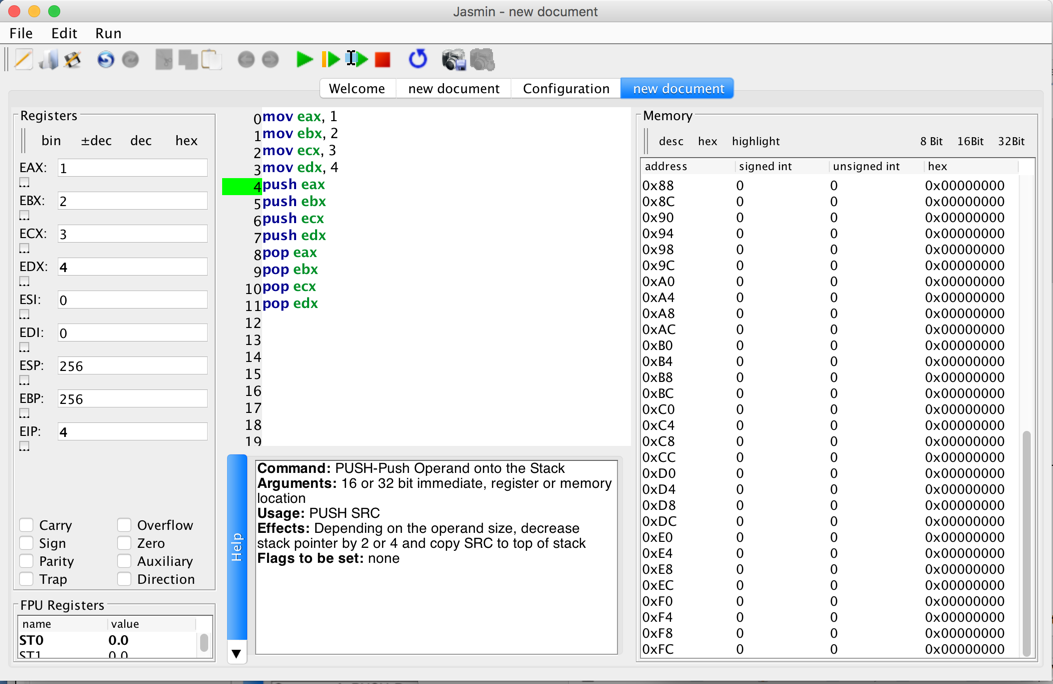
Push the Step four more times to execute only the next four instructions.
You see the values 1, 2, 3, and 4 pushed onto the stack, as shown below.
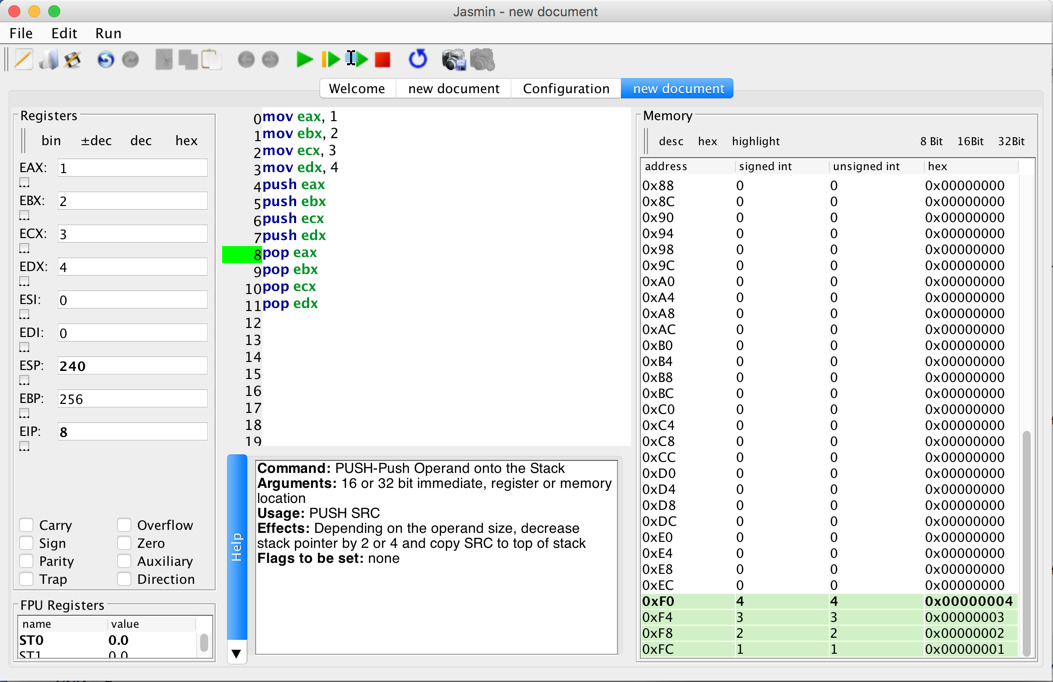
Push the Step four more times to execute the remaining four instructions.
Now the registers contain these values:
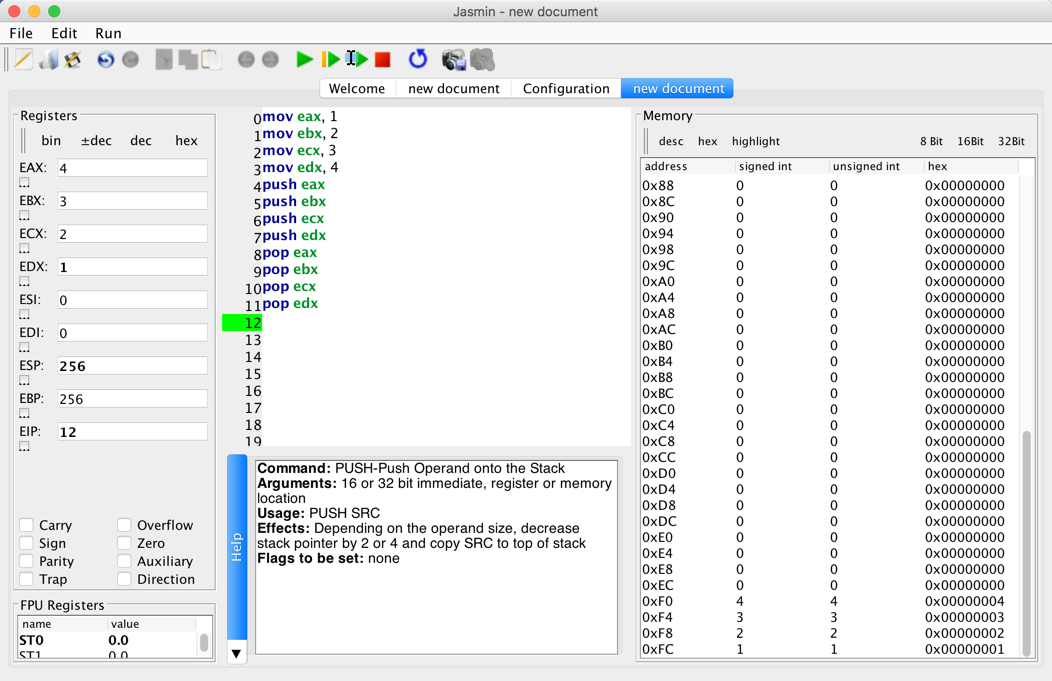
In the Code section, type in these instructions.
mov eax, 1
mov ebx, 9
mov ecx, 49
push eax
push ebx
push eax
push ecx
push ebx
push eax
pop eax
pop ebx
pop ecx
add eax, ebx
pop ecx
add eax, ecx
pop ebx
pop ecx
add eax, ebx